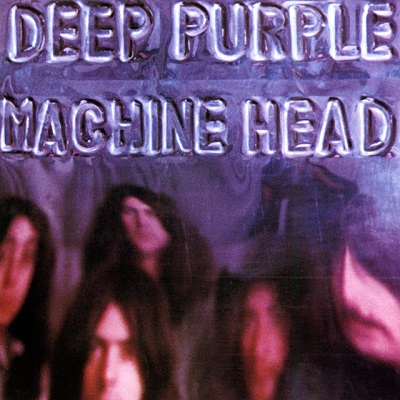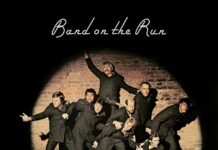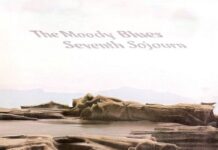Deep Purple’s Machine Head was not made under favorable circumstances. The band was originally scheduled to begin recording at The Casino in Montreux, Switzerland, but, in their own words, “some stupid with a flare gun burned the place to the ground.” They rented out a concert hall with hopes of capturing their ‘live’ sound for the new studio album, but were evicted by the local police because of the noise level. With the Rolling Stones’ 16-track mobile studio in tow, the band members and their entourage finally settled in on the ground floor of the Grand Hotel for three weeks of intense tracking. Having refined their sound with In Rock and Fireball, Deep Purple Mark II would soon join the ranks of Led Zeppelin and Black Sabbath as the frontrunners of the early 70s hard rock sweepstakes. Released in April 1972, Machine Head was destined to become the definitive heavy metal record of the era.
Hitting Number One in the UK, Machine Head eventually stormed the charts in the States as well. This was due, in part, to the release of Made In Japan, a double LP “live” album released a mere eight months later that confirmed the band’s command of the stage. More than anything, however, it was the “Smoke On The Water” single, with an edited “studio” version from Machine Head on Side A and the “live” version from Made In Japan on Side B, which ultimately brought the band to the upper crest in America. Fortunately, Ritchie Blackmore’s inimitable riff would soon find its way to the fingers of any would-be guitarist coupled with lyrics about the fiasco in Montreux isn’t the album’s only strongpoint.
“Highway Star,” a second single, is just as important as “Smoke” in establishing Purple’s driving identity. It is a mainstay of the band’s live performances to this day, and was, for several years, the opening number of their concerts. Moreover, “Highway Star” is representative of the intertwining guitar and organ exchanges that Blackmore and Jon Lord often engaged in. “Lazy” and “Space Truckin'” would also become staples of Purple’s shows — the former a bluesy toss-off that showcases Ian Gillan’s ear-shattering vocal calisthenics and Ian Paice’s resplendent drumming, and the latter a stratospheric joy ride that became the launching pad for exploratory 30-minute jams. The inconspicuous chemistry of “Maybe I’m A Leo,” “Picture Of Home” and “Never Before” beautifully underscores Purple’s credibility as a world-class rock and roll outfit.
Obviously, an album of this magnitude has had its share of reissues. In 1997, Purple bassist Roger Glover remixed the entire record, added “When A Blind Man Cries,” the lone B-side, and bundled it with the original mix for a double CD 25th anniversary extravaganza. Machine Head was then remixed in 5.1 and released on DVD-Audio in 2001. A quadraphonic mix appeared on Super Audio CD (SACD) in 2003. For its 40th anniversary in 2012, Machine Head received the royal treatment as a five-disc box set, complete with all the remasters, remixes, bonus live tracks and a hefty book.
In the liner notes, Glover more or less says the circumstances surrounding the band at the time and their accumulated abilities as musicians are what give Machine Head its fresh, uncluttered, and honest sound. Over 50 years later and repeated listenings — it’s an assessment few can argue with.
~ Shawn Perry




















